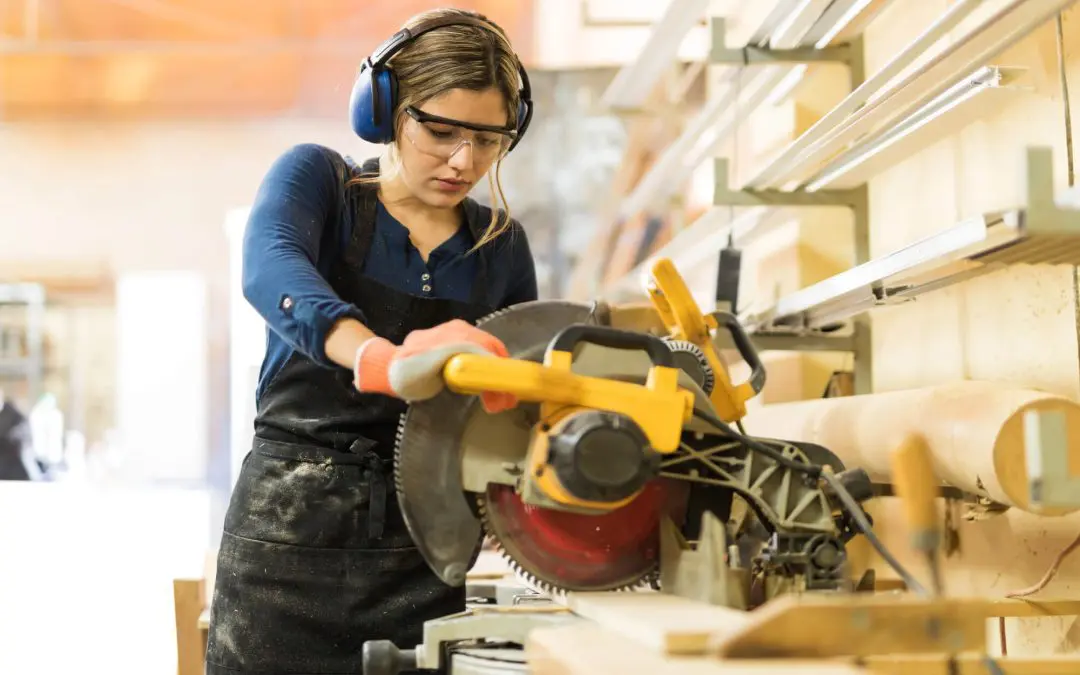Power tools are a huge time-saver. They speed up jobs, make cleaner cuts, and open up all kinds of possibilities for DIYers and pros alike. But one slip-up—just one—can land you in the ER. Every year, thousands of people learn that lesson the hard way. Most of those injuries could’ve been avoided with better habits, not better tools. If you’re using power tools regularly in your garage, on a job site, or for weekend projects—take a minute to make sure you’re not making one of these all-too-common power tool safety mistakes.
Power Tool Safety Mistakes: Skipping Safety Gear Because You’re “Just Doing a Quick Cut”
This is how a lot of power tool injuries happen. You figure you’re only making one cut or drilling one hole, so you leave the safety glasses on the bench or skip ear protection. That’s when things go sideways. A snapped blade, a kickback, or a flying nail doesn’t care how quick the job is.
Gloves, goggles, and hearing protection aren’t optional; they’re insurance. And they only take a few seconds to put on.
Using Dull Blades and Bits
You might think a dull blade is safer because it’s less sharp. It’s actually the opposite. Dull tools force you to push harder, which gives you less control. That’s how cuts wander, kickbacks happen, and hands end up in the danger zone.
Keep your blades sharp, your drill bits clean, and your tools in top shape. A tool that cuts cleanly is a tool that cuts safely.
Ignoring the Manual is a Big Power Tool Safety Mistake (Yes, Really)
Nobody wants to sit down and read a manual. But manufacturers don’t include that info just to fill a box. That book tells you what the tool can do, what it can’t, and how to avoid damaging it—or yourself.
Every tool is a little different. One model’s safety guard might work differently than another’s. One drill might have a torque setting you’re not used to. Taking five minutes to skim the manual can save you from weeks of recovery.
Getting Lazy With Your Workspace
Power tools are only half the equation. The surface you’re working on matters just as much. Cutting on the floor, balancing boards on plastic tables, or working in a cluttered garage increases your risk—fast.
Make sure your workspace is clear, stable, and well-lit. Clamp down materials. Use sawhorses or a proper workbench. Give yourself room to move, and don’t rush setups just to save time. That shortcut usually costs more than it saves.
Removing Guards or Safety Features
Some people take guards off their circular saws or disable safety switches on drills because they think it makes things “easier.” It doesn’t. It just makes them more dangerous.
Those features are there because people got seriously hurt without them. If a guard is in the way, figure out a better technique. Don’t ditch the safety gear.
Not Unplugging Tools When Changing Blades or Bits
It seems obvious, but too many people skip this one. If you’re changing a saw blade, sanding pad, or drill bit, unplug the tool first. Don’t just trust the trigger. A little bump is all it takes for the motor to kick on.
If it’s battery-powered, pull the battery. If it’s corded, unplug it. Simple move, major difference.
Holding the Workpiece Instead of Securing It
Trying to hold a piece of wood steady while cutting it is a quick way to lose a finger. Always secure your work with clamps or a vice. That keeps both hands on the tool, where they belong.
Trying to “just hold it” never works as well as you think. The tool grabs, the piece moves, and suddenly you’ve got a mess—or worse, an injury.
Using the Wrong Tool for the Job
Trying to use a jigsaw like a circular saw, or a drill like an impact driver, just leads to frustration and mistakes. Every power tool has a purpose. Stick to the one that’s built for the task, and you’ll work faster, safer, and with better results.
Power Tool Safety FAQs
How often should I check my power tools for wear and tear?
Give them a quick once-over before each use. Look for frayed cords, loose parts, dull blades, or unusual noises. A more detailed inspection every few months is a smart move if you use them regularly.
Can I use extension cords with power tools?
Yes, but make sure it’s a heavy-duty cord rated for the tool’s power draw. Underrated cords can overheat and become a fire hazard.
What’s the most important piece of safety gear?
All of it matters, but if you had to choose one: safety glasses. Eye injuries from flying debris happen fast, even during simple tasks.
Are battery-powered tools safer than corded ones?
Not necessarily. Both can be safe or dangerous depending on how you use them. Battery tools remove the trip hazard of cords, but they can still kick, bind, or fail like any other tool.
Do I need training to use power tools?
You don’t need formal training, but you do need to understand how the tool works, how to use it safely, and when to stop if something feels off. Watching a few credible how-to videos or reading the manual goes a long way.
Home Inspectors of Columbus offers home inspections in the Chattahoochee Valley of Georgia. Contact us to schedule our services.

